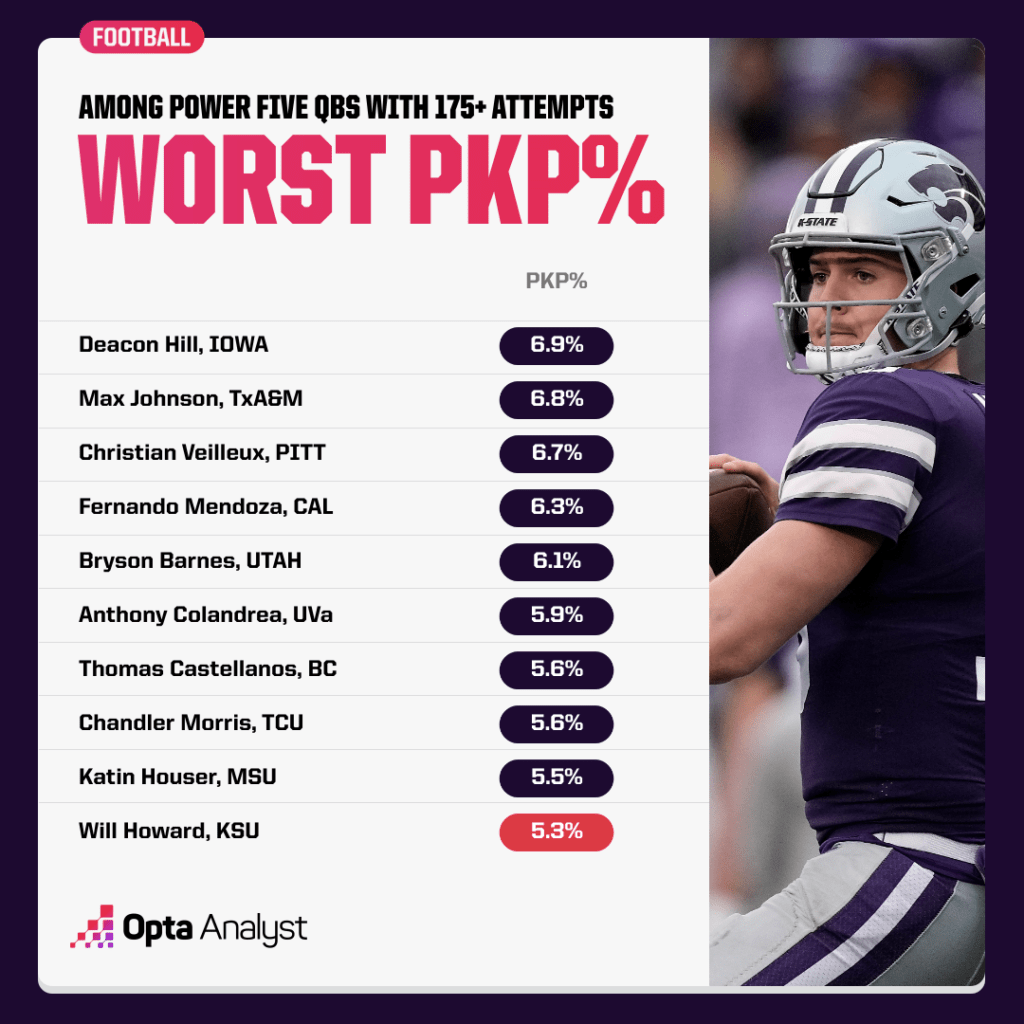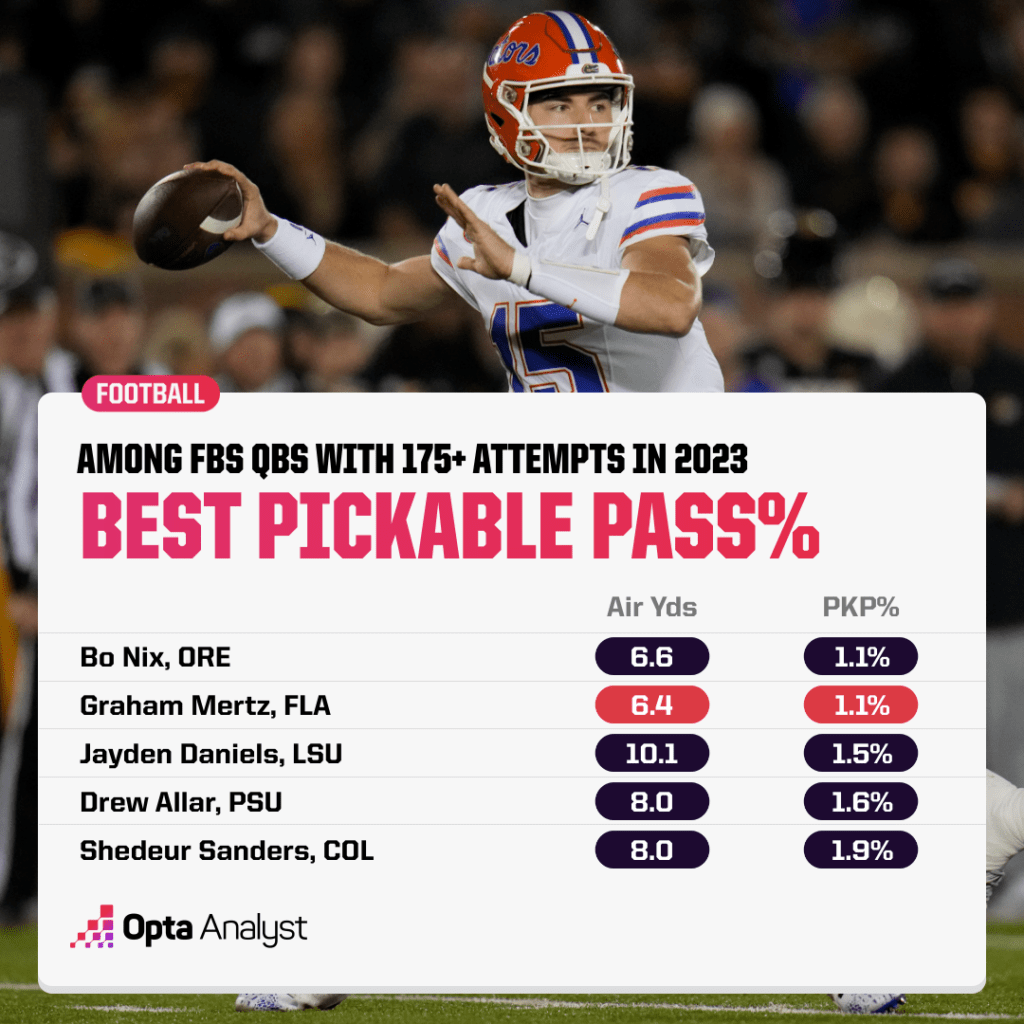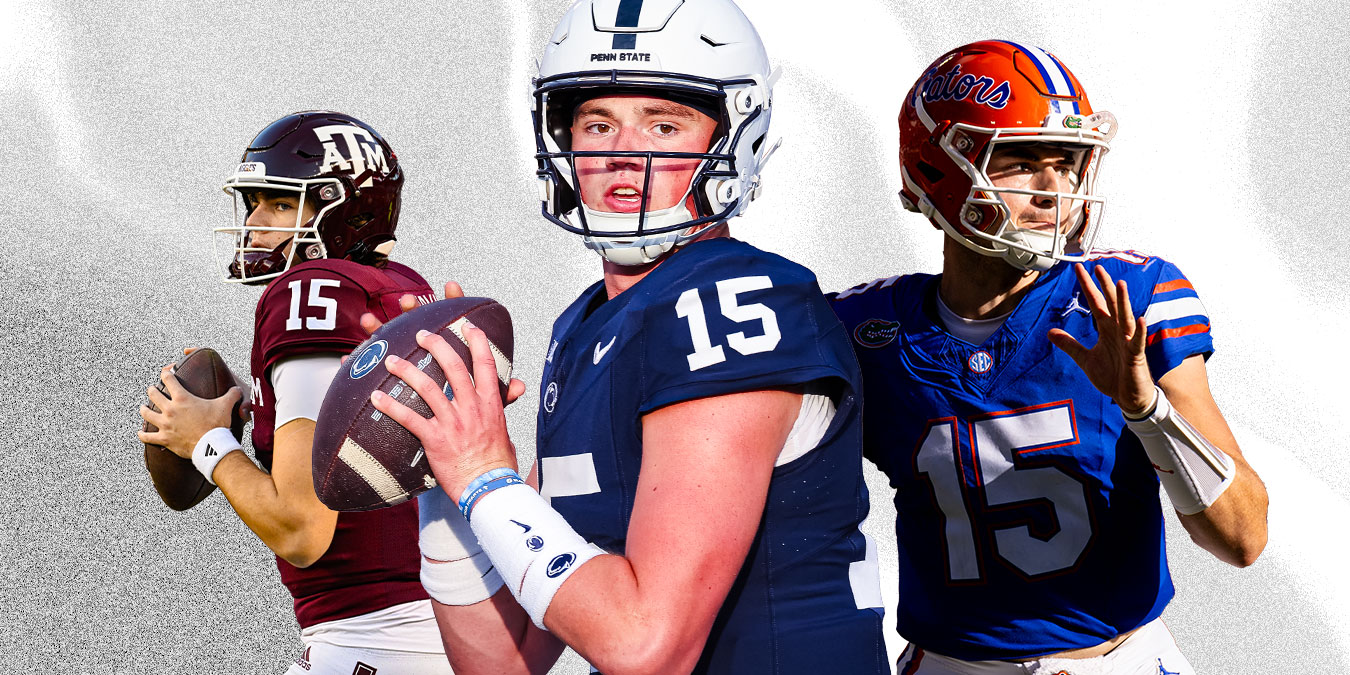We look at the seven most interesting QB situations heading into the 2024 college football season. How they perform will go a long way toward shaping the first 12-team playoff.
It’s been a long time since college football has felt more open at the top than it does entering the 2024 season.
Nick Saban’s retirement from Alabama robs the sport of its big, bad bully of the past 18 years, and Jim Harbaugh’s move from Michigan to the Los Angeles Chargers means that last season’s national champion is due for a transition year.
Kirby Smart’s Georgia, Steve Sarkisian’s Texas, and Dan Lanning’s Oregon all look elite, while Ryan Day’s Ohio State has a roster worthy of winning it all – at least on paper.
The sport’s elite ranks feel so open partly because of quarterback uncertainty among the top teams. Both of last year’s national title game participants, Michigan and Washington, sent QBs off to the first round of the NFL Draft.
Among other potential College Football Playoff contenders in 2024: Ohio State, Oregon, LSU, Oklahoma, Notre Dame, Florida State and Kansas State will all have new players under center. Texas will have Arch Manning pushing incumbent Quinn Ewers for playing time.
Meanwhile, almost everyone else in the playoff picture has a different kind of uncertainty – a question over how well the established starter can play.
In that spirit, let’s break down seven of the most interesting quarterback situations of 2024. How these players perform will go a long way toward shaping the first 12-team playoff.
Ohio State (Will Howard)
Day, OSU’s head coach, had a flawless QB track record before he whiffed last season with Kyle McCord. Now McCord is exiled to Syracuse, and his replacement is Kansas State’s Will Howard.
At first glance, Howard is not a glossy pickup. In four seasons at Kansas State, he was only the starter for the past year and a half, and his passing numbers were fine but not world-beating (7.4 yards per throw, 24 touchdowns, 10 interceptions, and a 140 rating).
But that was productive in a run-based K-State offense, as were Howard’s 61 designed carries for a 6.9-yard average. Only four FBS quarterbacks in 2023 had more designed runs for a better average. Howard’s 78.1% well-thrown rate was a tick above the 76.4% national average despite an open target rate of 74.3% – about three points below the national average.
Howard’s blemish, though, was easy to spot: a 5.3% pickable pass rate that held up as one of the worst marks in the country, against a 4.0% average. The easiest way for Howard’s time in Columbus to go awry would be for him to throw more picks than the 10 he threw in 2023.

Penn State (Drew Allar)
Allar was one of the sport’s most disappointing players in 2023, when he took over for long-time starter Sean Clifford as the Nittany Lions’ QB. The season was bad enough that James Franklin fired his offensive coordinator, Mike Yurcich, and replaced him with Kansas OC Andy Kotelnicki.
Penn State has been the clear-cut third-best team in the Big Ten for a while now, but the additions of Oregon, USC and Washington mean that Allar will need to drastically improve his play to keep Penn State relevant in the conference and the playoff race.
Last year, Penn State hesitated to have him throw the ball downfield, as he averaged just 8.0 air yards per throw and seemed allergic to throwing vertical routes. Allar’s 74.7% well-thrown rate was below average despite a massive 86.1% open target rate. His one saving grace was ball security, as his 1.6% pickable pass rate was sixth in FBS among QBs with 100 attempts.
Now Allar needs to get more ambitious, and he needs to do it without last season’s No. 1 receiver, KeAndre Lambert-Smith, who made a surprise transfer move to Auburn in April.
Michigan (Alex Orji, Davis Warren)
The timing of Harbaugh’s departure left Michigan in a bind for 2024. He didn’t get the Chargers job until late January, when the postseason transfer portal window had already closed.
Sherrone Moore did not add a quarterback in the spring portal window, either, and few good ones are available by that point in the year anyway. So the Wolverines will ride most likely with Orji or former walk-on Davis Warren, with Orji looking the part of the frontrunner coming out of spring practice.
There’s not much data on Orji as a collegiate passer because he’s thrown all of one pass in his two seasons at Michigan – which, at least, is more than Warren.
The Wolverines used Orji as a situational runner who spelled JJ McCarthy last year. Whether he can also throw at all will determine if Michigan has any chance of mounting a playoff charge or will need to take a major step backward in Moore’s first year.
With an entire offensive line’s worth of players rolling out, Michigan won’t be able to run over 15 teams in a row again.
Florida (Graham Mertz)
It might seem weird to call Mertz interesting at this point in his career. He’s been in college for five years and started for the last four at Wisconsin and then Florida.
But Mertz’s 2024 will be compelling because of what’s at stake: If he plays poorly and the Gators miss a bowl while competing against a brutal schedule, head coach Billy Napier will be very easy for the school to fire.
But if Mertz plays well and the Gators show signs of pushing the likes of Georgia in the SEC, then Napier could stick around and the league could look much different for the next handful of years. So, what does Mertz have in his bag, and what can coordinator Rob Sale do to help him?
Last year, Mertz was a low-risk proposition. His 6.4-air yard average and 1.1% pickable pass rate were the third- and second-lowest marks, respectively, in FBS among those with at least 175 attempts, and the work Gators receivers did with the ball in their hands helped Mertz have his best season yet (headlined by a 20-to-3 touchdown-to-interception ratio).

Mertz also didn’t have a single disastrous game, posting at least a 137 rating every week. Yet Florida still went 5-7, and arguably Mertz’s two best playmakers, receiver Ricky Pearsall (NFL first-round pick) and tailback Trevor Etienne (transfer to Georgia) are gone.
Texas A&M (Conner Weigman)
Last year was supposed to be Weigman’s breakout, but you know how it went. He got hurt in the fourth game and didn’t play again, and the team posted a mediocre 7-6 record. Jimbo Fisher got the largest buyout in college sports history (nearly $80 million) to walk away, and A&M hired Duke’s Mike Elko to replace him.
Elko is a defensive specialist, though, and the most exciting hire for Weigman’s purposes was offensive coordinator Collin Klein, who has helped build good offenses at his alma mater Kansas State. Now he’ll work with Weigman, who has a clean bill of health and showed some good things in his brief 2024 action: While attempting passes of a longer-than-average 9.6 air yards, Weigman exceeded national averages in both well-thrown rate (80.7%), catchable ball percentage (81.4%), and pickable pass rate (an excellent 1.8%).
Weigman returns to a team in transition, which lost elite receiver Evan Stewart in the transfer portal after Fisher’s ouster. If Elko’s first year is to go well, it’ll be because Weigman comes back strong from injury and shows major development.
Virginia Tech (Kyron Drones)
Drones, who took over as Tech’s starter a few games into the year, proved he’s a genuine dual threat. His 111 designed runs were more than all but four quarterbacks, and Drones’ 6.9-yard average on them was better than any of them.
Meanwhile he posted an 82.1% well-thrown rate and a tidy 3.0% pickable pass rate, both well ahead of average, on a roughly-average 8.8-air yard average. Drones was a capable downfield passer and one of the best running QBs in the country, so it’s no surprise that things clicked for Virginia Tech once he supplanted Grant Wells on the depth chart.
The one-time transfer from Baylor was one of the most productive QBs anywhere after he got the job, and his excellence was enough to take the Hokies from a 3-8 record the year before to a 7-6 mark with a bowl win.
With his entire offensive line and running back Bhayshul Tuten returning, Drones is a serious breakout candidate for 2024. And with the ACC aside from Florida State (which isn’t on Tech’s schedule) looking gettable, it’s reasonable to wonder if the Hokies could hang around the playoff race deep into the fall.
Check out our MLB, NBA and NFL coverage as well. And follow us on X and Instagram for more!
